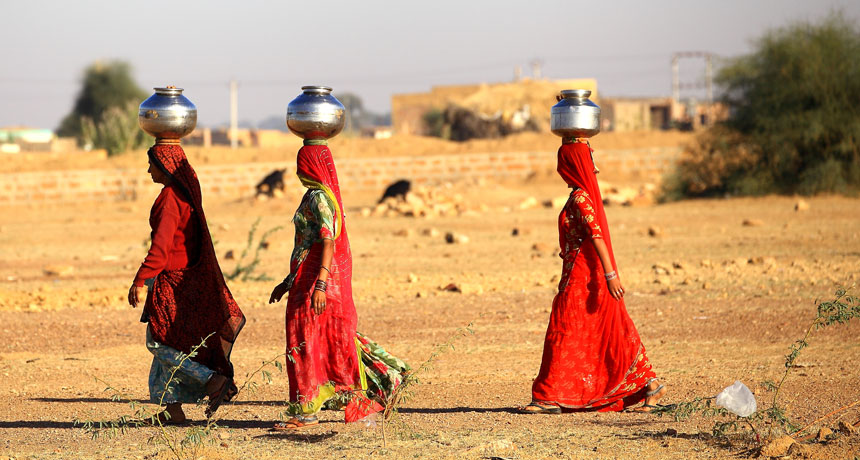South Asia could face deadly heat and humidity by the end of this century
Warning: Undefined array key 0 in /home/www/www.yibao58.com/wp-includes/media.php on line 795
Warning: Undefined array key 0 in /home/www/www.yibao58.com/wp-includes/media.php on line 801
Warning: Undefined array key 1 in /home/www/www.yibao58.com/wp-includes/media.php on line 801
Warning: Undefined array key 0 in /home/www/www.yibao58.com/wp-includes/media.php on line 803
Warning: Undefined array key 1 in /home/www/www.yibao58.com/wp-includes/media.php on line 803
Warning: Undefined array key 0 in /home/www/www.yibao58.com/wp-includes/media.php on line 806
Warning: Undefined array key 1 in /home/www/www.yibao58.com/wp-includes/media.php on line 806
Warning: Undefined array key 0 in /home/www/www.yibao58.com/wp-includes/media.php on line 795
Warning: Undefined array key 0 in /home/www/www.yibao58.com/wp-includes/media.php on line 801
Warning: Undefined array key 1 in /home/www/www.yibao58.com/wp-includes/media.php on line 801
Warning: Undefined array key 0 in /home/www/www.yibao58.com/wp-includes/media.php on line 803
Warning: Undefined array key 1 in /home/www/www.yibao58.com/wp-includes/media.php on line 803
Warning: Undefined array key 0 in /home/www/www.yibao58.com/wp-includes/media.php on line 806
Warning: Undefined array key 1 in /home/www/www.yibao58.com/wp-includes/media.php on line 806
Warning: Undefined array key 0 in /home/www/www.yibao58.com/wp-includes/media.php on line 795
Warning: Undefined array key 0 in /home/www/www.yibao58.com/wp-includes/media.php on line 801
Warning: Undefined array key 1 in /home/www/www.yibao58.com/wp-includes/media.php on line 801
Warning: Undefined array key 0 in /home/www/www.yibao58.com/wp-includes/media.php on line 803
Warning: Undefined array key 1 in /home/www/www.yibao58.com/wp-includes/media.php on line 803
Warning: Undefined array key 0 in /home/www/www.yibao58.com/wp-includes/media.php on line 806
Warning: Undefined array key 1 in /home/www/www.yibao58.com/wp-includes/media.php on line 806
Warning: Undefined array key 0 in /home/www/www.yibao58.com/wp-includes/media.php on line 795
Warning: Undefined array key 0 in /home/www/www.yibao58.com/wp-includes/media.php on line 801
Warning: Undefined array key 1 in /home/www/www.yibao58.com/wp-includes/media.php on line 801
Warning: Undefined array key 0 in /home/www/www.yibao58.com/wp-includes/media.php on line 803
Warning: Undefined array key 1 in /home/www/www.yibao58.com/wp-includes/media.php on line 803
Warning: Undefined array key 0 in /home/www/www.yibao58.com/wp-includes/media.php on line 806
Warning: Undefined array key 1 in /home/www/www.yibao58.com/wp-includes/media.php on line 806
Warning: Undefined array key 0 in /home/www/www.yibao58.com/wp-includes/media.php on line 827
Warning: Undefined array key 1 in /home/www/www.yibao58.com/wp-includes/media.php on line 827
Warning: Undefined array key 0 in /home/www/www.yibao58.com/wp-includes/media.php on line 70
Warning: Undefined array key 1 in /home/www/www.yibao58.com/wp-includes/media.php on line 71
Warning: Undefined array key 0 in /home/www/www.yibao58.com/wp-includes/media.php on line 70
Warning: Undefined array key 1 in /home/www/www.yibao58.com/wp-includes/media.php on line 71

India and Pakistan are no strangers to extreme temperatures. In 2015, two heat waves killed more than 3,500 people there. But by the end of the century, new climate simulations suggest, extreme heat and humidity could put hundreds of millions at risk of death.
Published online August 2 in Science Advances, the simulations show fairly specifically where future heat waves will be most dangerous if greenhouse gas emissions continue unabated: densely populated agricultural areas in South Asia, particularly in Pakistan, India, Bangladesh and Sri Lanka.
“The results of this study are of concern,” says climate scientist Christoph Schär of ETH Zurich. In the regions that will be affected, the majority of people don’t live in cities, but villages near coastal areas and low-lying river valleys where they cultivate crops and tend livestock. Many are poor with limited access to air conditioning and other infrastructure to combat the health risks of rising temperatures.
Study coauthor Jeremy Pal, an environmental engineer at Loyola Marymount University in Los Angeles, says the team was surprised to see how widespread the projections of such severe heat waves in Asia were. In a previous study, he and a colleague found that future warming will make the Persian Gulf extremely vulnerable to deadly heat waves.
“We weren’t expecting the heat waves to be as severe as those we found” in the Persian Gulf, Pal says. “However, parts of South Asia seem to be equally vulnerable.”
The new study accounts for the combination of temperature and humidity, which reduces the human body’s ability to cool itself through evaporation of sweat. If the ambient temperature in humid conditions, known as the wet-bulb temperature, exceeds skin temperature of 35° Celsius (95° Fahrenheit), humans quickly overheat. These temperatures can equate to well over 38° C (100° F) in standard, or dry-bulb, temperature. Not even the fittest of humans would be able to survive a few hours in these conditions, even in well-ventilated shaded areas, Pal says.
If global warming continues unabated, by 2100, average global temperatures could rise by 4.25 degrees Celsius compared with current temperatures. Under this scenario, the new study finds that 4 percent of the South Asian population would experience deadly wet-bulb temperatures exceeding 35° C. Approximately 75 percent of the population would experience humid temperatures higher than 31° C, which are dangerous for most humans, but rarely reached right now, Pal and colleagues report.
However, the study shows that number can drop from 75 percent to 55 percent if climate change mitigation strategies are enacted, such as those pledged in the 2015 Paris climate accord (SN: 1/9/16, p. 6).“It is important to take the global projections and zoom them in to regional and local levels to better understand the societal impacts of climate change,” Pal says.
